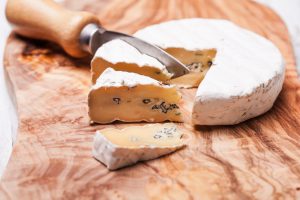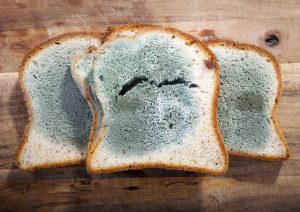Is Moldy Food Dangerous?
Food gets moldy, and there’s nothing you can do about it. What are the scenarios in which it’s safe to eat that piece of fruit that has a little moldy spot?
What is mold?
Microscopic fungi that lives on plants and animal matter is the right definition for mold. There are roughly 300.000 species of fungi, but no one really knows for sure.
Molds are made of multiple cells and can be seen growing on food with the naked eye. While some molds are dangerous, and can cause allergic reactions or even respiratory problems, some are safe and even sold on food (like brie cheese).
What moldy food you can eat?
 Salami: Some assortments of salami even come coated in mold and are safe to eat. Others have mold incorporated for extra flavor.
Salami: Some assortments of salami even come coated in mold and are safe to eat. Others have mold incorporated for extra flavor.- Hard cheese: Getting a piece of cheese that has a little tiny mold spot on it is not necessarily a bad thing. It’s safe to cut out the molded part and eat the rest so you won’t have to throw out perfectly good cheese.
- Fruits and veggies: Like hard ones are safe to eat, as the mold is only on the surface and it can be cut out and eaten.
- Cheese made with mold: The hint is right in the name. Gorgonzola and Stilton have a mold surface and the extra mold can be cut out.
Moldy food to throw out
- Hot dogs: Being a processed food, hot dogs are not safe to eat at all when they get moldy. The packaging of the hot dogs gives perfect conditions for the mold to grow even more and become toxic.
- Casseroles: Any food you cooked and has developed molds is best to be thrown out. Pasta, rice and bacon should be disposed of too in these cases.
- Dairy products: Like yogurt and sour cream should be disposed as the mold spreads out and not only makes it taste horrible, but becomes a health hazard as well.
 Meat: Moldy meat not only smells awful, but is very bad for your health.
Meat: Moldy meat not only smells awful, but is very bad for your health.- Soft fruits and vegetables: Given that you can’t exactly cut out the mold, getting rid of the whole batch is best. The soft exterior doesn’t offer a lot of protection to the fruit when it comes to mold.
- Baked goods: Such as bread should be thrown out. Although there is a medical dispute when it comes to this, mold could be growing inside the bread, invisible to the eye. Better safe than sorry.
What if you eat mold?
Food poisoning is not always the correct answer on this one. Consumed in very small amounts, the fungi might get digested by your body and you’ll never even know it happened. Repeatedly eating moldy food can, however, affect your immune system in the long run, and it might cause, in some cases, nausea and vomiting.
Fighting against mold
Several easy measures can be taken in order to prevent mold from growing, like proper storage measures and wrapping your food up. Placing the goods in plastic containers is also a good idea. When it comes to vegetables that you don’t keep in your fridge, like potatoes or onions, it’s best for them to be in a dark and chill environment.
Also, don’t leave food hanging too long in your refrigerator, and be realistic how much you eat throughout a week.